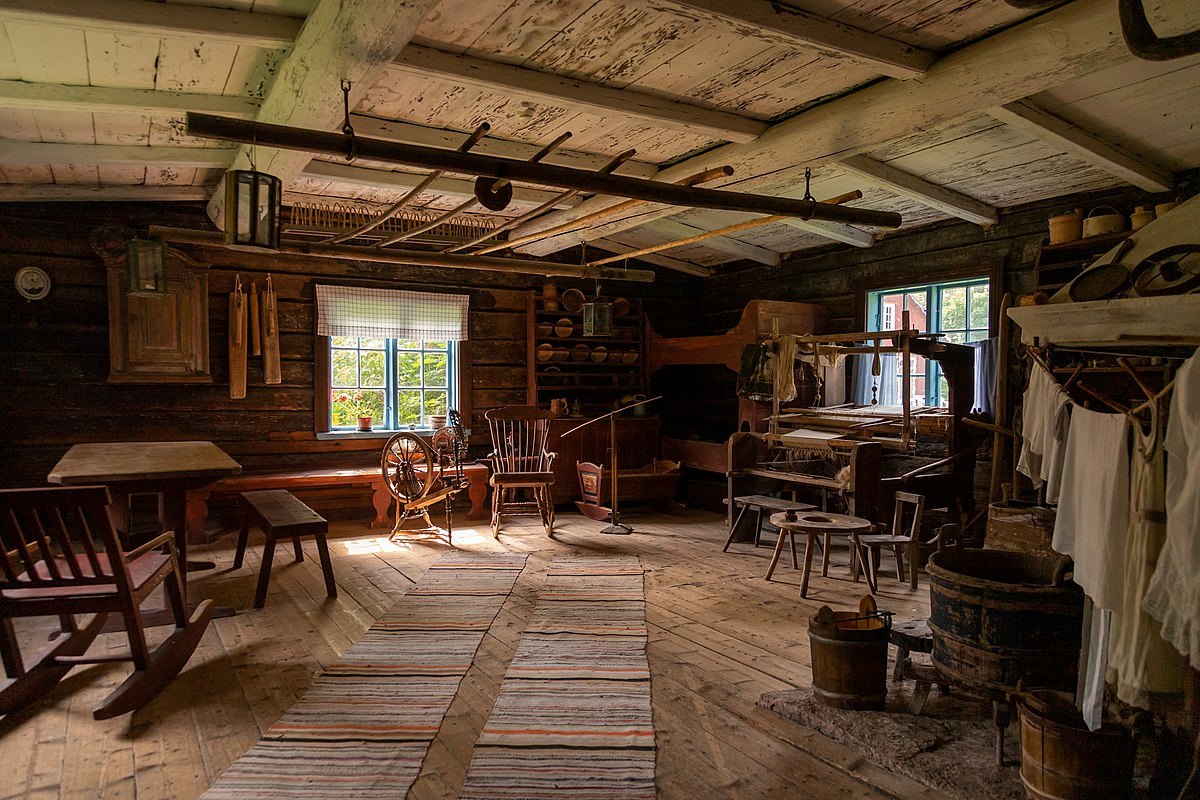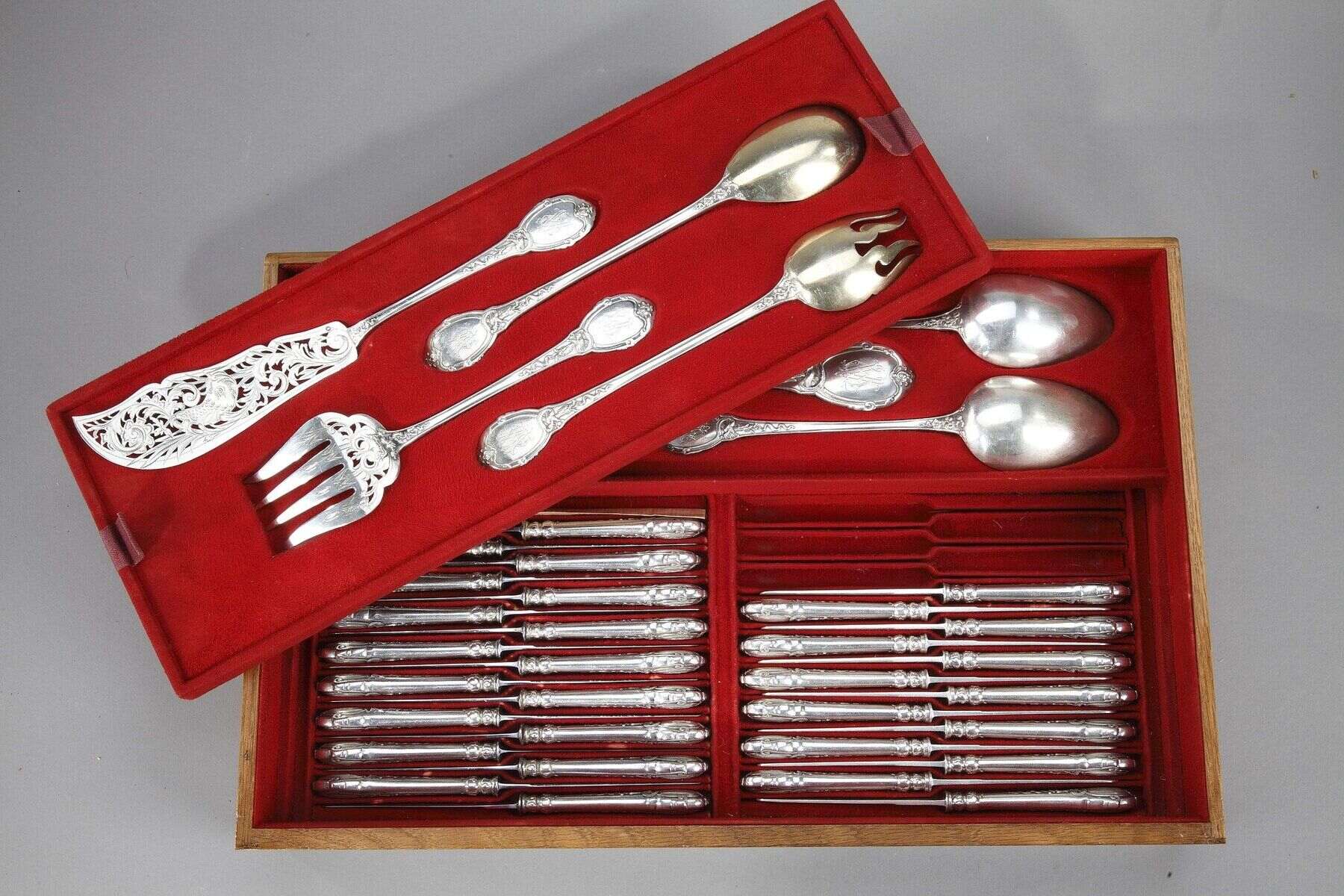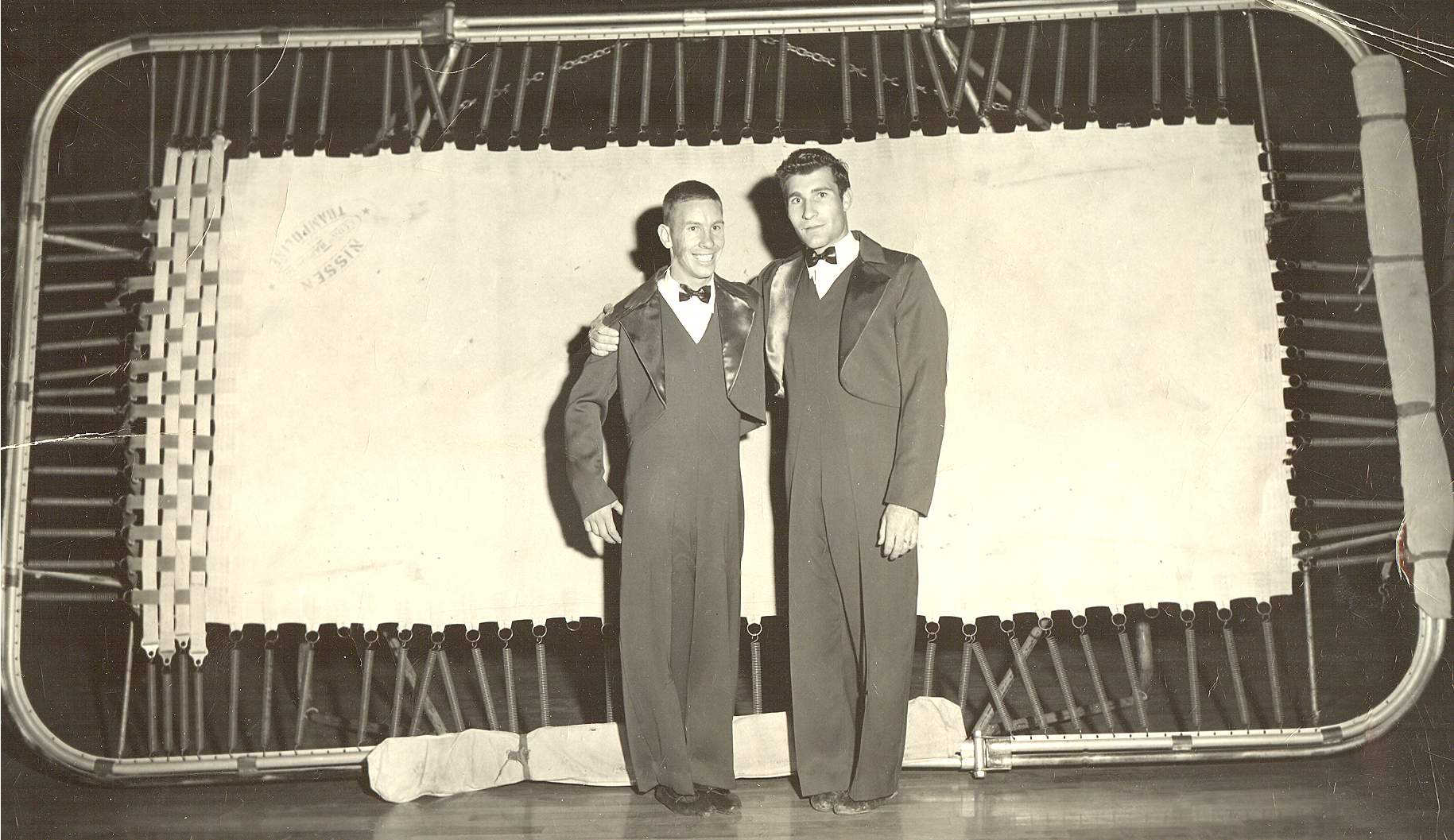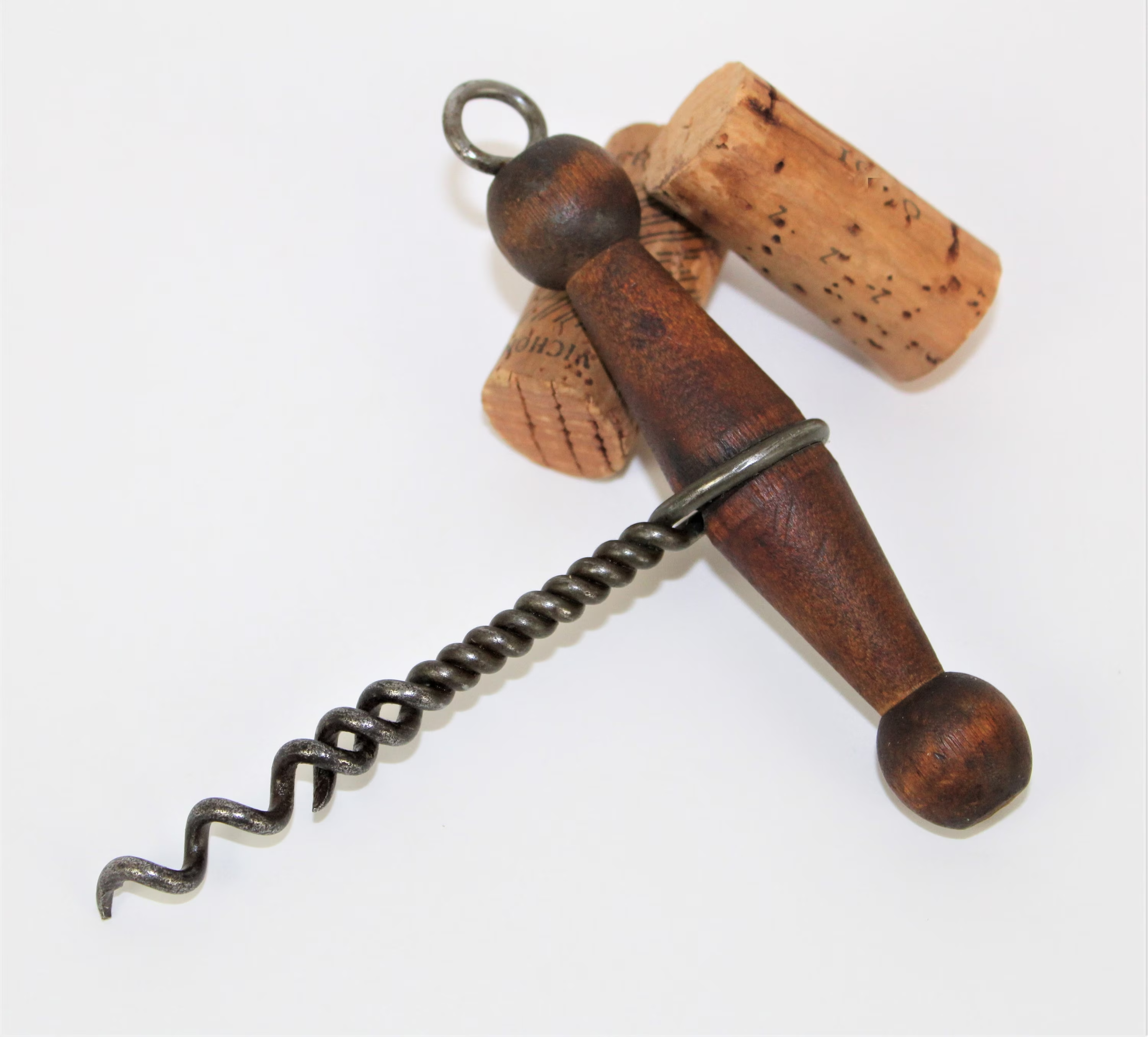

Articles
Who Invented Woodworking?
Modified: January 19, 2024
Discover the fascinating history of woodworking and learn about the ingenious inventors behind this timeless craft. Explore informative articles on the origins and evolution of woodworking techniques and tools.
(Many of the links in this article redirect to a specific reviewed product. Your purchase of these products through affiliate links helps to generate commission for Storables.com, at no extra cost. Learn more)
Introduction
Woodworking is an ancient craft that has been practiced for thousands of years. It involves the shaping, carving, and joining of wood to create functional and artistic pieces. From simple tools and techniques used by early civilizations to the intricate designs made possible by modern innovations, woodworking has played a pivotal role in human history.
In this article, we will delve into the fascinating world of woodworking, exploring its origins, notable figures, and the evolution of tools and techniques. We will also examine how woodworking has been influenced by different cultures and discuss some of the modern innovations that have revolutionized the craft.
Whether you are an avid woodworker or simply intrigued by the history and artistry of this ancient craft, join us on this journey to discover the roots of woodworking and its undeniable impact on human civilization.
Key Takeaways:
- Woodworking has a rich history dating back to ancient civilizations, showcasing human creativity and resourcefulness. From early techniques to modern innovations, woodworking continues to captivate and inspire artisans worldwide.
- The craft of woodworking transcends cultural boundaries, with diverse traditions and techniques found across the globe. Important figures and modern innovations have shaped woodworking into a vibrant and dynamic field, blending tradition with innovation.
Read more: Who Invented Hand Tools
History of Woodworking
The history of woodworking can be traced back to ancient civilizations that used wood for various purposes, from building shelters to crafting tools and utensils. The earliest evidence of woodworking dates back to the Paleolithic era, where crude wooden structures and tools have been found in archaeological sites.
As human civilization progressed, woodworking techniques advanced, and more intricate and functional pieces were created. In ancient Egypt, woodworking played a significant role in the construction of impressive structures like the pyramids and temples. Skilled artisans used chisels, saws, and adzes to shape and carve wood into intricate architectural details.
The ancient Greeks and Romans also valued woodworking, embracing the use of ornate woodwork in their temples, houses, and furniture. The skilled craftsmen of these civilizations developed sophisticated woodworking techniques, such as veneering and marquetry, to create intricate inlays and patterns.
During the Middle Ages, woodworking became an integral part of European society. Skilled carpenters and joiners crafted magnificent cathedrals, castles, and furniture using hand tools and traditional techniques. Woodworking guilds were established to regulate the craft and maintain high standards of craftsmanship.
Advancements in technology and the Industrial Revolution in the 18th and 19th centuries brought significant changes to the woodworking industry. Steam-powered machines and the invention of the circular saw revolutionized production, making woodworking more efficient and accessible.
Today, woodworking continues to be practiced by hobbyists, artisans, and professionals alike. Whether it’s fine furniture, exquisite carvings, or functional household items, woodworking remains a cherished craft, blending tradition with innovation.
Early Woodworking Techniques
Early woodworking techniques relied on simple tools and manual labor to shape and join wood. These techniques laid the foundation for the craft and set the stage for the innovations that would come in later centuries.
One of the earliest woodworking techniques is known as mortise and tenon joinery. This method involves cutting a slot (mortise) into one piece of wood and creating a matching projection (tenon) on another piece of wood. The two pieces are then interlocked, creating a sturdy and durable joint. This technique is still widely used today in furniture making and construction.
Another common woodworking technique utilized in antiquity is carving. This involves shaping and removing material from a piece of wood using a variety of tools. Early carvings often depicted religious symbols, mythological figures, or intricate patterns. The skill and precision required to create detailed carvings were highly valued by ancient civilizations.
Woodturning is yet another ancient technique that involves using a lathe to shape and smooth cylindrical pieces of wood. This technique allowed craftsmen to create round objects such as bowls, vases, and spokes for wheels. Woodturning techniques have evolved over time, with the use of foot or water-powered lathes giving way to electric lathes in modern times.
Bending wood was also a notable early technique that allowed craftsmen to create unique and curved pieces. Steaming or heating wood allowed it to become pliable, making it possible to shape it into intricate designs and forms. Bending wood was commonly used in the making of furniture, musical instruments, and boat-building.
These early woodworking techniques paved the way for the development of more refined methods and tools. They showcased the ingenuity and craftsmanship of our ancestors, as well as their ability to work with nature’s most versatile material: wood.
Important Figures in Woodworking
Throughout history, there have been many influential figures who have made significant contributions to the art and craft of woodworking. These individuals have not only mastered the techniques of woodworking but have also pushed the boundaries of creativity and innovation.
One such figure is Hans Wegner, a Danish furniture designer who played a pivotal role in the mid-century modern movement. Wegner’s designs reflected a perfect balance between form and function, combining elegant aesthetics with practicality. His iconic works, such as the Wishbone Chair and the Shell Chair, showcased his deep understanding of wood as a material and his ability to create exceptionally crafted pieces.
Sam Maloof is another renowned figure in woodworking. Known for his mastery of the craft and his organic and sculptural designs, Maloof’s furniture creations are highly sought after. His signature rocking chairs, characterized by their smooth curves and intricate joinery, have become synonymous with his name. Maloof’s blend of traditional techniques and artistic vision has earned him a well-deserved place in woodworking history.
The influence of James Krenov on modern woodworking cannot be overstated. Krenov, a Swedish-American woodworker, emphasized the importance of craftsmanship and the relationship between the craftsman and the wood. His approach to woodworking focused on the beauty of hand tools, attention to detail, and the use of carefully selected wood. Krenov’s seminal book, “The Impractical Cabinetmaker,” is revered by woodworkers around the world as a guide to the art of fine woodworking.
There are also notable figures in historic woodworking, such as Thomas Chippendale. Chippendale was an influential English cabinetmaker and furniture designer in the 18th century. His craftsmanship and imaginative designs made him a prominent figure during the Georgian era. The elegance and intricacy of Chippendale’s furniture, characterized by elaborate carvings and delicate details, continue to inspire woodworkers to this day.
While these figures have achieved fame and recognition, it is important to acknowledge the countless unnamed craftsmen throughout history who contributed to the development of woodworking. From ancient woodworkers who carved intricate hieroglyphs to the medieval artisans who meticulously crafted wooden altarpieces, their heritage lives on through the craftsmanship and dedication displayed in their work.
These important figures in woodworking have left a lasting impact on the craft, influencing future generations and shaping the way we approach woodworking today. Their vision, creativity, and technical expertise continue to inspire woodworkers across the globe, ensuring that the art of woodworking remains alive and thriving.
The origins of woodworking can be traced back to ancient civilizations such as the Egyptians and the Chinese, who used woodworking techniques to create furniture, tools, and structures. However, it is difficult to attribute the invention of woodworking to a single individual, as it has evolved over thousands of years through the contributions of many different cultures and craftsmen.
Evolution of Woodworking Tools
The evolution of woodworking tools has played a crucial role in shaping the craft and enabling woodworkers to create intricate and precise pieces. From rudimentary hand tools to advanced power tools, the development of woodworking tools has transformed the way wood is shaped, joined, and finished.
Early woodworking tools were simple and relied primarily on human strength. Sharp-edged tools like axes, adzes, and chisels were used to shape and carve wood. As civilizations progressed, more specialized tools emerged, such as saws for cutting wood and planes for smoothing surfaces.
One significant advancement in woodworking tools occurred during the Industrial Revolution with the development of steam-powered machines. These machines, such as the circular saw and the planer, greatly increased productivity and precision in woodworking. Woodworkers were now able to cut and shape wood with greater accuracy, leading to the production of more complex and detailed pieces.
In the 20th century, the introduction of electric-powered tools revolutionized woodworking once again. Electric hand drills, routers, and power sanders allowed woodworkers to work more quickly and efficiently. This led to an expansion of possibilities in terms of design and craftsmanship.
Today, woodworking tools continue to evolve with the integration of computer technology. Computer Numerical Control (CNC) machines have become increasingly popular in woodworking workshops, enabling precise and automated cuts and carvings. These machines are programmed to execute complex designs with speed and accuracy, opening up new possibilities for creative expression in woodworking.
Additionally, advancements in tool materials have improved the durability and performance of woodworking tools. High-carbon steel blades and carbide-tipped cutting edges provide greater longevity and sharpness, reducing the need for frequent resharpening.
Woodworking hand tools have also seen improvements in ergonomic design, making them more comfortable and efficient to use. For example, the development of ergonomic hand planes with contoured handles and adjustable features allows woodworkers to work for longer periods without excessive strain.
It is important to note that while power tools have become prevalent in modern woodworking, many woodworkers still value and appreciate the craftsmanship involved in using traditional hand tools. Hand tools provide a unique connection to the wood and offer a level of precision and control that is often preferred for certain woodworking tasks.
The evolution of woodworking tools has undoubtedly revolutionized the craft, making it more accessible, efficient, and versatile. Whether a woodworker prefers old-fashioned hand tools or embraces the latest technological advancements, the tools available today continue to push the boundaries of what is possible in the world of woodworking.
Read more: Who Invented The Stairs
Woodworking in Different Cultures
Woodworking is a craft that has been practiced in various cultures around the world, each with its own unique techniques, styles, and traditions. From the intricate joinery of Japanese woodworking to the ornate carvings of Indian furniture, the diversity of woodworking traditions is a testament to the rich cultural tapestry of our global heritage.
In Japan, woodworking is deeply rooted in tradition and craftsmanship. The art of joinery, known as “sashimono,” is highly revered. Japanese woodworkers use precise hand tools to create intricate and seamless connections between wooden parts, often without the use of nails or screws. This meticulous joinery technique can be seen in traditional Japanese architecture, where wooden structures are held together by complex interlocking joints that have stood the test of time.
In Scandinavia, woodworking has long been a vital part of the culture. The tradition of “karpentry” in Nordic countries focuses on creating functional and aesthetically pleasing wooden structures and furniture. Scandinavian woodworkers have historically utilized locally sourced wood, such as pine and birch, to craft minimalist designs characterized by clean lines and functionality. This Scandinavian design ethos has gained international recognition for its timeless elegance and simplicity.
In India, woodworking has a rich history intertwined with traditional craftsmanship. Intricate carvings adorn wooden doors, ceilings, and furniture, showcasing the skill and artistry of Indian woodworkers. The use of motifs inspired by nature, mythology, and religious symbolism is common in Indian woodworking. Traditional Indian furniture, such as the intricately carved “jali” screens and “jodhpur” beds, continue to showcase the craftsmanship and cultural heritage of the region.
In Africa, woodworking is deeply connected to tribal traditions and cultural practices. African woodworkers have historically used hand tools to create functional tools, musical instruments, and intricate masks and sculptures. The use of indigenous woods, such as ebony and mahogany, adds to the unique beauty of African wooden carvings. African woodworking traditions often incorporate storytelling elements and symbolic meanings, making each piece a reflection of the rich cultural heritage of the region.
These are just a few examples of the diverse woodworking traditions found around the world. Each culture brings its own unique techniques, designs, and materials to the craft, resulting in a rich tapestry of woodworking traditions that continue to captivate and inspire craftsmen and enthusiasts alike.
Modern Woodworking Innovations
Woodworking, like many other industries, has seen its fair share of advancements and innovations in recent years. These modern woodworking innovations have revolutionized the craft, making it more efficient, precise, and accessible than ever before.
One significant innovation in modern woodworking is the integration of computer technology. Computer Numerical Control (CNC) machines have become increasingly popular in woodworking workshops, allowing for precise and automated cuts, carvings, and engravings. These machines use computer software to control the movement of cutting tools, resulting in intricate and complex designs with speed and accuracy. CNC technology has expanded the possibilities of woodworking, enabling woodworkers to create intricate patterns, 3D carvings, and precise joinery.
The development of new materials has also had a profound impact on modern woodworking. Engineered woods, such as plywood and medium-density fiberboard (MDF), offer increased stability and versatility in woodworking projects. These materials are often used in furniture manufacturing and cabinetry, providing strong, consistent, and cost-effective alternatives to solid wood.
Advancements in adhesive technology have also improved the durability and strength of woodworking joints. High-performance adhesives, such as epoxy and polyurethane glues, provide strong bonding capabilities, allowing woodworkers to create seamless and long-lasting connections. These adhesives are particularly useful in laminating wood veneers and joining different types of wood together.
Power tools have seen significant advancements in recent years, making woodworking more efficient and less labor-intensive. Cordless power tools, powered by rechargeable batteries, offer mobility and convenience, allowing woodworkers to work in various locations without the need for power outlets. Additionally, the development of brushless motor technology has increased the efficiency and longevity of power tools, providing more power and longer runtimes.
Another notable innovation in modern woodworking is the use of laser technology. Laser cutters and engravers have become popular tools for precision cutting and engraving on wood. Whether it’s intricate designs, intricate inlays, or personalized engravings, lasers offer a level of precision and detail that is difficult to achieve with traditional woodworking tools.
The eco-conscious movement has also influenced modern woodworking, with a growing emphasis on sustainable practices and the use of reclaimed wood. Woodworkers are increasingly mindful of sourcing materials responsibly, opting for reclaimed and salvaged wood, which not only reduces waste but also adds character and unique qualities to their creations.
These modern woodworking innovations have transformed the craft, enabling woodworkers to push the boundaries of creativity and craftsmanship. With the integration of technology, new materials, and advanced tools, woodworking continues to evolve, remaining a vibrant and dynamic field that combines tradition with innovation.
Conclusion
Woodworking is a captivating craft with a rich history and a vibrant future. From its humble beginnings as a rudimentary means of survival to the sophisticated artistry and technological advancements of today, woodworking has evolved and thrived across cultures and throughout time.
Throughout history, woodworking has been a testament to human creativity, craftsmanship, and resourcefulness. From the ancient Egyptians’ intricate architectural details to the Scandinavian minimalism of the Nordic regions, woodworking traditions have reflected the unique cultural identities and values of different societies.
Important figures, such as Hans Wegner, Sam Maloof, and James Krenov, have left an indelible mark on the craft, showcasing the possibilities that can be achieved through skill, innovation, and artistic vision. The evolution of woodworking tools, from hand tools to power tools and computer-driven CNC machines, has expanded the horizons of possibility, making woodworking more precise, efficient, and accessible.
Woodworking in different cultures has provided fascinating insights into the diverse uses of the craft and the unique aesthetics that emerge from different traditions. From the intricate joinery of Japanese woodworking to the ornate carvings of Indian furniture, the world of woodworking encompasses a wealth of techniques, styles, and materials that continue to captivate enthusiasts and inspire artisans.
Modern woodworking innovations, including the integration of computer technology, advancements in materials and adhesives, and the utilization of laser technology, have revolutionized the craft. These innovations have opened up new possibilities for creativity and have made woodworking more efficient and precise than ever before, while the commitment to sustainability and the use of reclaimed wood align with contemporary environmental concerns.
As we reflect on the journey through the history and innovations of woodworking, it becomes clear that the craft holds a timeless allure. Woodworking remains a testament to the ingenuity, artistry, and connection to nature that humans have had throughout history. Whether you’re a novice woodworker or an experienced craftsman, the art of woodworking invites you to explore your creativity, connect with the past, and leave a meaningful mark on the world through the timeless beauty of wood.
Frequently Asked Questions about Who Invented Woodworking?
Was this page helpful?
At Storables.com, we guarantee accurate and reliable information. Our content, validated by Expert Board Contributors, is crafted following stringent Editorial Policies. We're committed to providing you with well-researched, expert-backed insights for all your informational needs.















0 thoughts on “Who Invented Woodworking?”